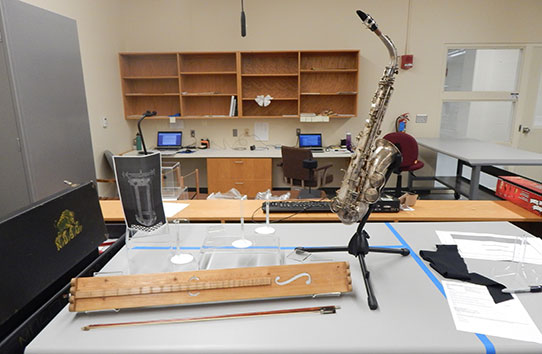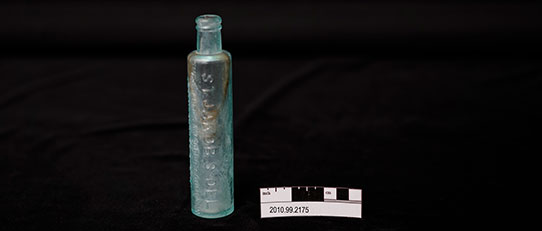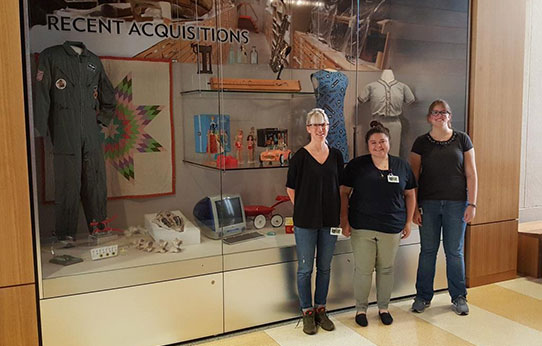Please Excuse the Mess: Exhibit Installation in Progress
This summer, as collections interns, we had two major projects. The first was discussed in the last post by my fellow intern, Meg Glazier-Anderson (http://blog.statemuseum.nd.gov/blog/teeth-cleaning). The second was the Recent Acquisitions Case.
The purpose of collections care and maintenance—and museums themselves—is to preserve heritage and history for future generations as best we can. Collections care goes beyond maintaining an updated catalog, periodic inventory, and correct storage practices. It revolves around sharing and exploring history with the public. Telling the stories we have collected, preserved, and maintained helps connect future generations with their past and keep true to the ideals of what a museum is and should be.
We interns tried to keep that in mind as we developed the Recent Acquisitions Case. The case is located in the Corridor of History, near the Adaptation Gallery: Geologic Time. Every year new interns search out artifacts and stories they would like to include in the case. When a list is finalized, our next steps are creating a layout for placement of the artifacts, writing labels, researching related materials, and making dozens of small adjustments as things change and stories become more cohesive. At the end of our collective time, with only about six weeks to design the case, interns de-installed last year’s exhibit and installed the new.

Layout experiments. We found it useful to adjust our layouts on the full scale.
There are very few requirements or criteria for the case, but artifacts must have been acquired by the museum within the last year. Though most of our artifacts came from the Museum Division general collection, we worked with the Archaeology and Historic Preservation Division and the North Dakota Geological Survey’s paleontologists to discuss some of their recent finds as well. We had an abundance of choices. Since there is no timeline we had to stick to, nor just one story to tell, we took advantage of the wildly varying objects within the museum’s collections. Each intern chose a few pieces she liked for the interesting story, unique construction, or nostalgia, and together we put the disparate objects into related sections and stories.

A bottle of “St. Jakob’s Oel” from Fort Rice, one of the pieces from the Archaeology and Historic Preservation Division’s collections. (Photo by David Nix).
For those who have not seen the case, it spans prehistoric time to the early 2000s; from a Subhyracodon occidentalis skull—an ancient rhino—to an iMac computer. There are Barbies, a bowling dress, 19th century medicine bottles, and musical instruments, among other things. The case proved a real chance for us not only to show off our exhibit design skills (and gain a few more) but to show off the breadth of the collection. It’s not a large case, all things considered--12 feet x 8 feet x 3 feet, and yet it contains so many stories, objects, and ideas.
The process of putting the case together, from artifact selection to installation, was an adventure in group work, constant readjustment, and often asking advice from the people who do this every day and with whom we worked closely. We wanted to share the stories we get to work with every day and show our visitors how much a museum can discover and share.

The three museum division interns—Meg, Maria, and Elenore—in front of the installed case. (photo by Genia Hesser)

